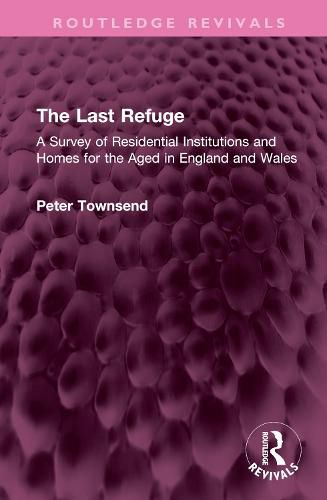Readings Newsletter
Become a Readings Member to make your shopping experience even easier.
Sign in or sign up for free!
You’re not far away from qualifying for FREE standard shipping within Australia
You’ve qualified for FREE standard shipping within Australia
The cart is loading…






First published in 1964, The Last Refuge originated from the author's visit to a Victorian workhouse which had become an Institution for old people. A visit that was to show frightful overcrowding in sparsely furnished dormitories. Day-rooms bleak and uninviting in which sat watery-eyed and feeble men, their spirit and pride drained away by the hopelessness of the surroundings. The many unexpected conditions Professor Townsend found led him to undertake this major enquiry into the question "Are communal homes for the aged necessary in our community and if so, what form should they take?" Visits were paid to a random sample of 173 residential institutions and homes, and welfare officers, matrons and elderly residents were interviewed. The general conclusion was that communal homes of the kind that existed in England and Wales did not adequately meet the physical, psychological and social needs of the old people living in them and required immediate alternative services and living arrangements. This book will be of interest to students of sociology, social care, public policy and gerontology.
$9.00 standard shipping within Australia
FREE standard shipping within Australia for orders over $100.00
Express & International shipping calculated at checkout
First published in 1964, The Last Refuge originated from the author's visit to a Victorian workhouse which had become an Institution for old people. A visit that was to show frightful overcrowding in sparsely furnished dormitories. Day-rooms bleak and uninviting in which sat watery-eyed and feeble men, their spirit and pride drained away by the hopelessness of the surroundings. The many unexpected conditions Professor Townsend found led him to undertake this major enquiry into the question "Are communal homes for the aged necessary in our community and if so, what form should they take?" Visits were paid to a random sample of 173 residential institutions and homes, and welfare officers, matrons and elderly residents were interviewed. The general conclusion was that communal homes of the kind that existed in England and Wales did not adequately meet the physical, psychological and social needs of the old people living in them and required immediate alternative services and living arrangements. This book will be of interest to students of sociology, social care, public policy and gerontology.